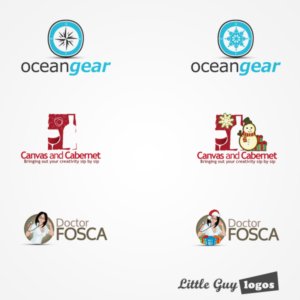Social Media Marketing: Should Your Business be on TikTok?
TikTok is the fastest growing social media network in the world right now, with the app having been downloaded over 1.5 billion times in the App Store and Google Play. If you’re not already there, you’re probably wondering, should my business be on TikTok? We’re going to help you answer that question. Let’s discuss the app, its audience, and what kind of business can benefit from adding TikTok to their social media marketing strategy.
What is TikTok?
For those unfamiliar, TikTok is an app that allows users to create and post videos within a news feed. Users are allowed to create clips 3-15 seconds long and compile clips into a video up to a minute in length. Users can add music or sounds to the videos that are available within the app. Most of the content is comedic or dance oriented, but the variety of content is growing. For example, we are starting to see videos featuring creators using or reviewing their favorite products.
Who is on TikTok?
Just a few years ago, the majority of TikTok users were around the age of 13. Today, 60% of the app’s monthly active users in the U.S. are 16-24 year old. Another notable demographic is that 55.6% of users are male and 44.4% are female. This is an appreciable difference compared to other social platforms that show a female-favorable user base, such as Instagram with a 65%-35% sway. It’s also worth noting that 43% of users are in India. No one is certain why this is, but 40% of new downloads are based out of India. All in all, the largest number of users come out of the U.S, India, and Douyin, China.
How Can Brands Use TikTok?
There are four main ways brands can utilize TikTok:
- Directly: You can create your own channel and upload relevant videos through the channel.
- Influencers: Influencer marketing is growing in popularity on TikTok. Major brands like Google, Coca-Cola, Universal Pictures, and Sony have worked with popular users to raise brand awareness and extend reach of their recent promotions.
- Paid Advertisements: There are three main types of paid ads brands have to choose from on TikTok as of now:
- Launch Screen Ads: These appear when a user initially opens the app. Users can tap on the ad to get sent to an external webpage or participate in a hashtag challenge.
- Video Ads: In-feed videos are also offered as a native way to advertise content on the app. You can pay to have your content promoted on the “For You” page.
- Branded AR: Brands also have the ability to create branded lenses, filters, and stickers, which are similar to Snapchat.
- Hashtag Challenge Plus: While this is still a paid feature, it is strictly e-commerce focused. Brands can sponsor a hashtag or a theme that creates a challenge for users to create videos participating in the challenge. Users can then browse products associated with the brand.
Is it Right for Your Business?
To answer this question, you need to ask yourself as a marketer or business owner a number of other questions. Will you be able to create original content that promotes your brand? Do you understand the style of content on TikTok? And most importantly, what is your target audience? If you’re looking to target Gen Z or Millennials, TikTok is a great way to gain mass exposure. Additionally, it’s a great way for brands that have a corporate tone to create a more youthful and fun feel for themselves. If your brand strictly targets an older demographic, it may not be worth the investment just yet, but it may be in the near future.
More from Onimod Global
At Onimod Global we are experts in social media marketing. We know which platforms are best for brands, and create visibility for brands where customers are searching, interacting, and ultimately converting. Find out more about what we do, or contact us today!


